Europäisches Parlament / Pietro Naj-Oleari
Summary and latest developments
- Parties belonging to the EPP family are (in national polls) the strongest political family in 13 (+1
compared with the last barometer) countries . The Socialist family is leading in 5 (-1), the
Eurosceptic Conservatives in 4 (+2), the Liberal family in 3 (-1). In France and Latvia, unaffiliated
movements /parties are stronger than any party family, in Italy the far-right is the strongest
political family. - If one looks only at the political colour of the strongest political force (and not the entire party
family), an EPP party is leading in 10 countries, the Socialists in 9, the ALDE in 4, the ECR in 3,
independents and right-wing populists in one each - In many countries, the advantage of the leading political family in the opinion polls is very slim
(France, Spain, Slovakia, Finland, Belgium, Lithuania. Sweden). - The EPP familiy enjoys a relatively strong support in the opinion polls (above 30%) in Germany,
Hungary, Romania, Austria, Croatia, Bulgaria, Slovenia, Portugal, Greece, Ireland, Lithuania,
Malta and Cyprus - In the European Council, 9 Heads of State and Government belong to the EPP family, 8 to the
Liberals, 5 to the Socialists/Social Democrats, 2 to the Eurosceptic Conservatives, one to the
European Left. 3 are formally independent
Outlook on the EP elections in 2019
With caution, the following statements can be made:
- Despite (significant) losses in bigger member states, the EPP would likely remain the strongest political family (171-
195 seats) in the EP (24,3%-27.7% of seats) - In relative terms, the share of the EPP group (currently 28.9% of the seats) would only moderately be reduced
(-1.2% up to -4.6%), as the EPP Group would suffer less from the departure of the (likely) British MEPs than other
political groups (in comparison the S&D would be at ca. 19,4%, down from 25%) - Parties of the far-right (ENF) and the far-left (GUE/NGL) would have a potential of about 20% of the seats, together
with a potential new group headed by the 5-Star-movement even around 22-24%. It is still unclear where the 5-
Star-Movement will position itself. Together, the far-right, the far-left, a group led by the 5-Star-Movement and
the Eurosceptic ECR could gather up to one third of the seats. - A coalition of EPP and S&D would not have a majority on its own but would need a third partner
- Depending on the scenario, 64-72% of MEPs would continue belonging to moderate political groups (EPP,
S&D, Liberals+Macron-led movement („Europe en Marche“), Greens) - In comparison to the previous barometer the EPP remains more a less constant. S&D and Liberals (incl. Macron)
as well as the right-wing populist ENF with a slight increase. The EPP would still clearly remain the biggest group.
Even in the most favorable scenario, Socialists, Liberals and Greens clearly lack a majority of their own (328
seats, ca. 46% of the seats) – especially keeping in mind that for a more solid majority in the EP, a coalition will rather
need up to 380-400 seats - Due to several unknown variables (Will Macron form a group on his own or will he join the Liberals? Will the various
far-right parties manage to unite? Will the 5-Star-Movement form a group on its own?), three different scenarios
will be developed
Outlook on the EP elections in 2019 - Summary
Based on current opinion polls and weighing the different scenarios, the following
seat distribution seems likely:
- EPP: 180-185 seats
- S&D: 140-150 seats
- ALDE (plus Macron): 100-110 seats
- Greens/EFA: 50-55 seats
- ECR: 55-60 seats
- GUE/NGL: 50-60 seats
- ENF: 70-80 seats
- Potential Five-Star-Movement-group: rather unlikely as they may not meet the
target for a group formation (25 MEPs from at least 7 countries), potential: 25-35
seats - EFDD rather unlikely to survive as a parliamentary group (not necessarily due to
the numbers but for political reasons)




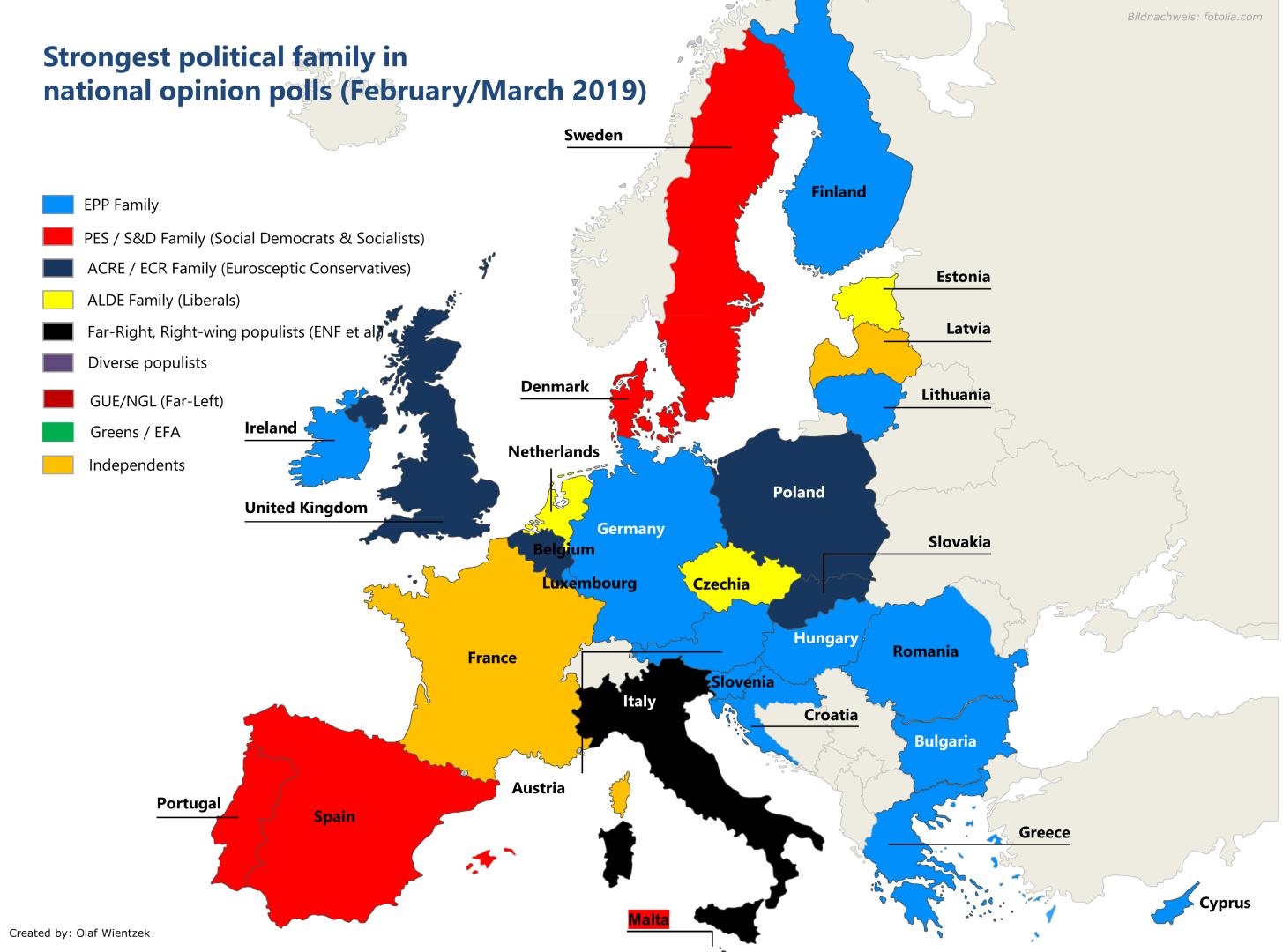
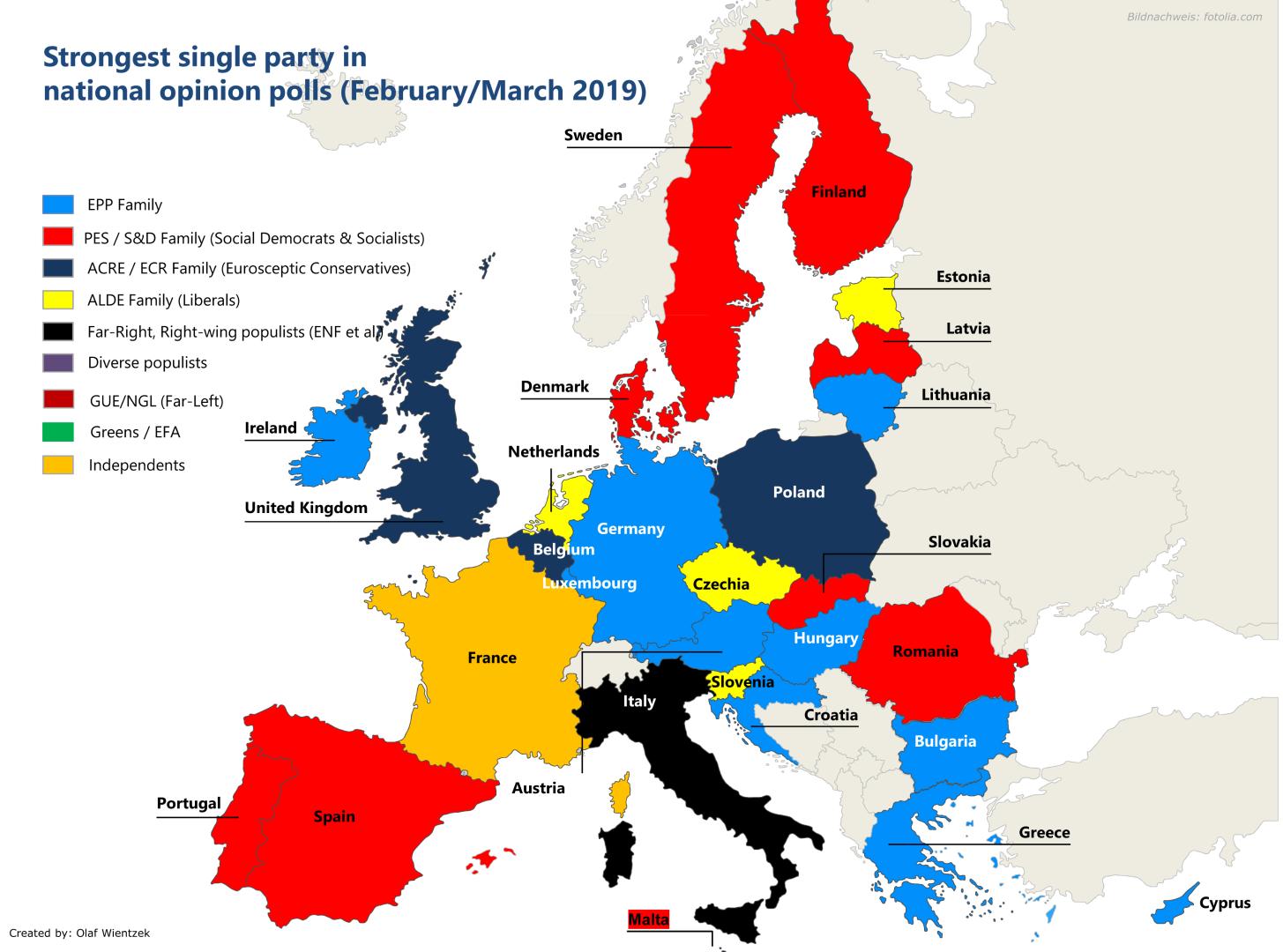

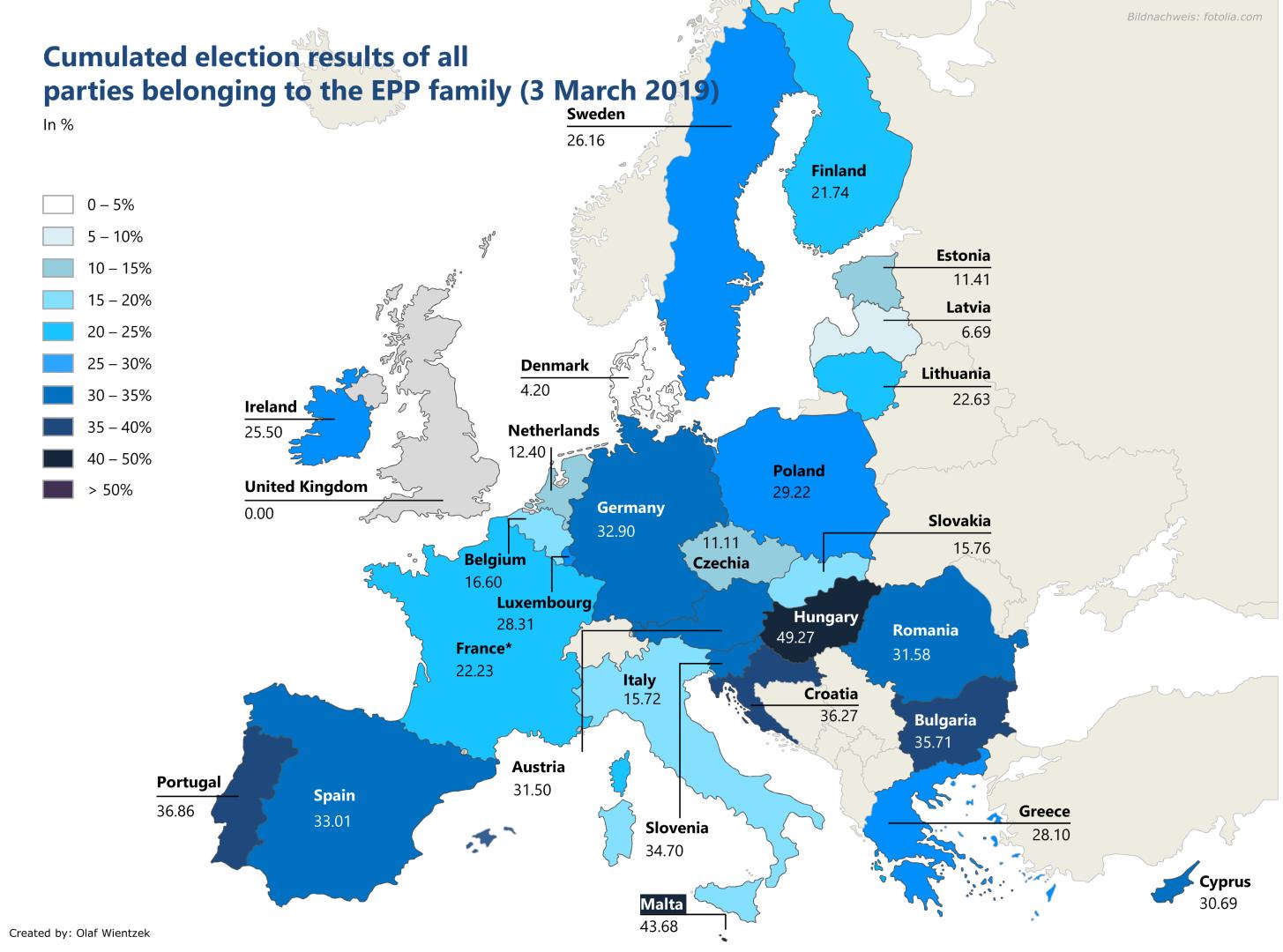
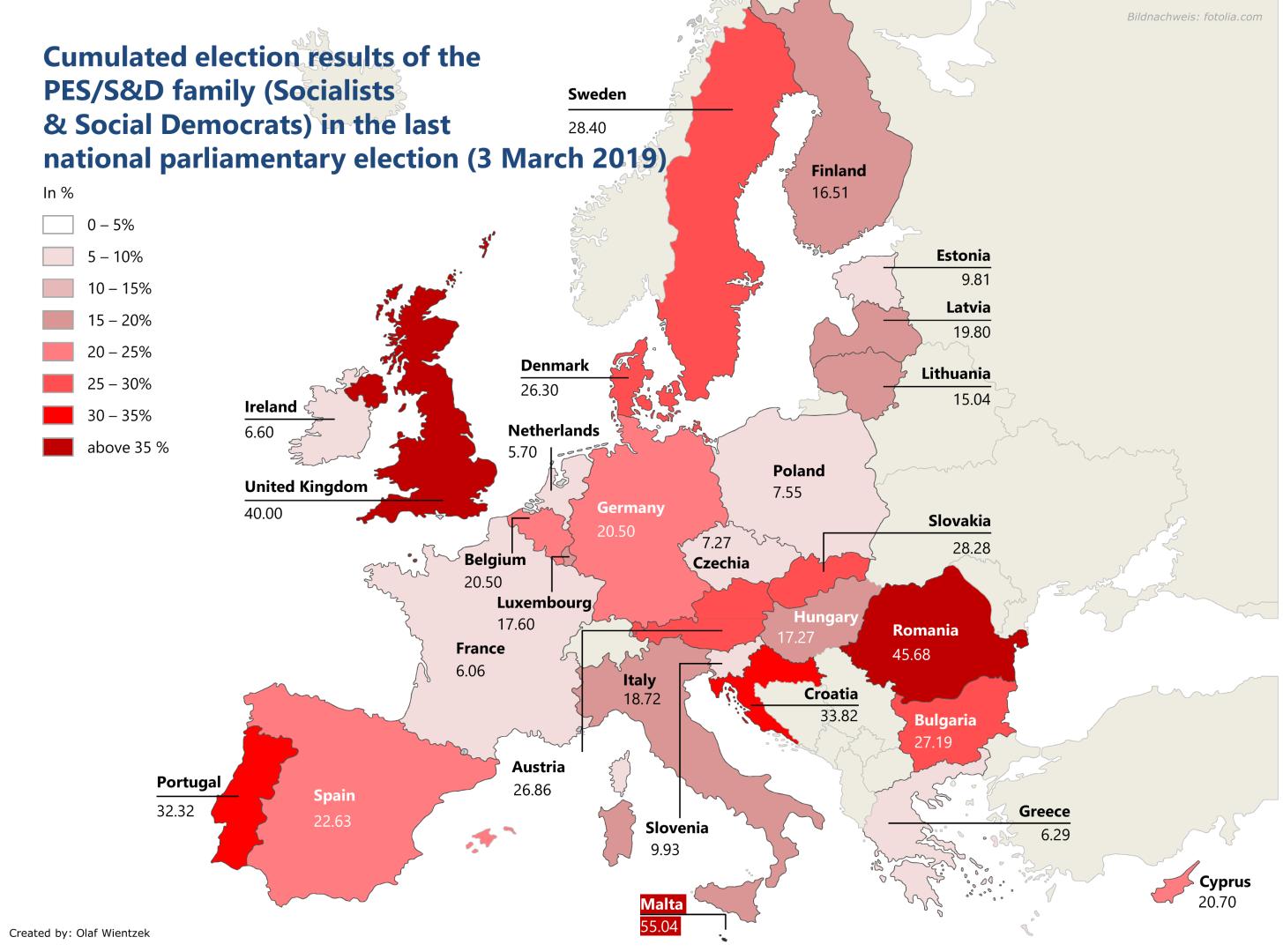

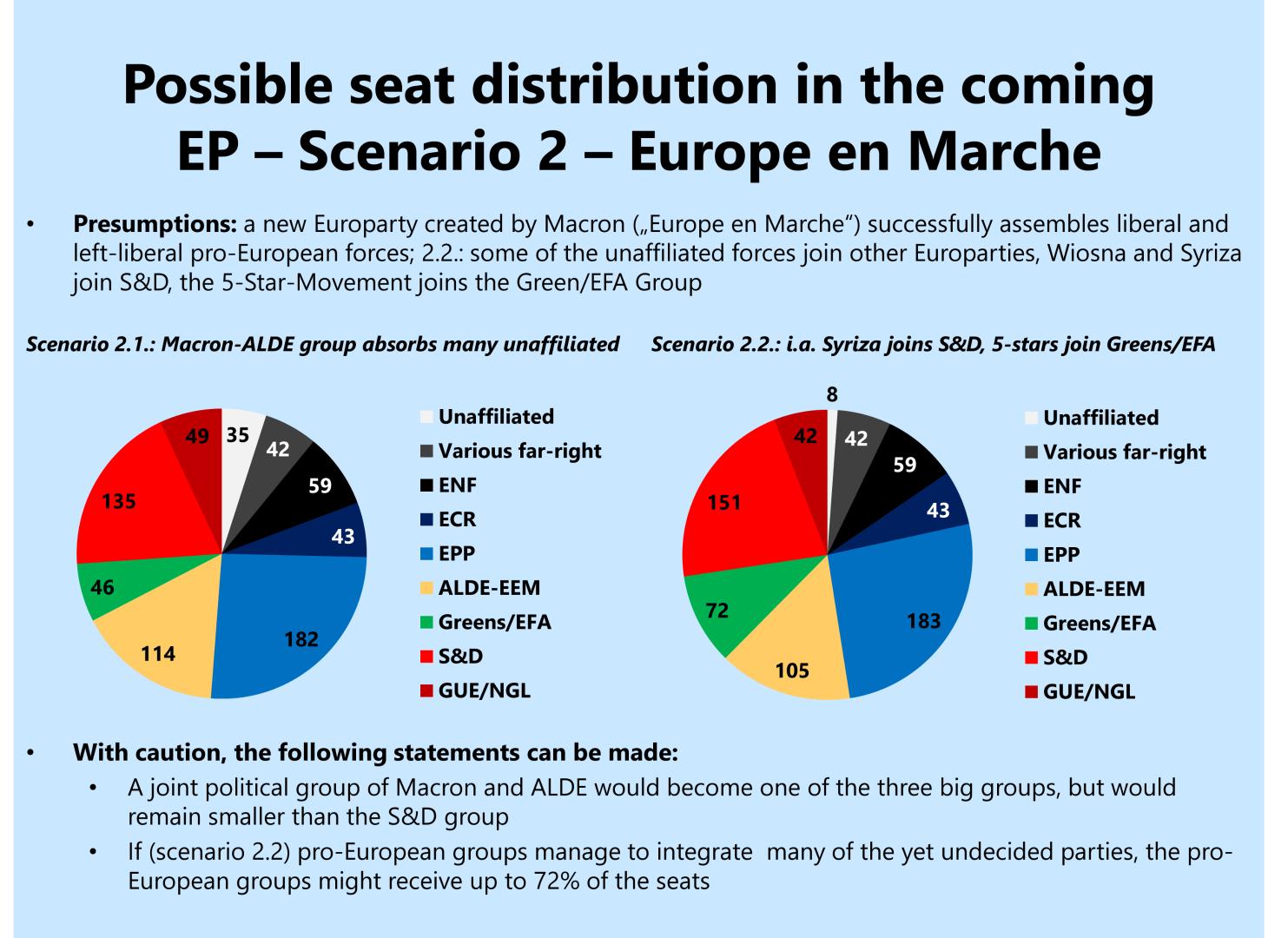
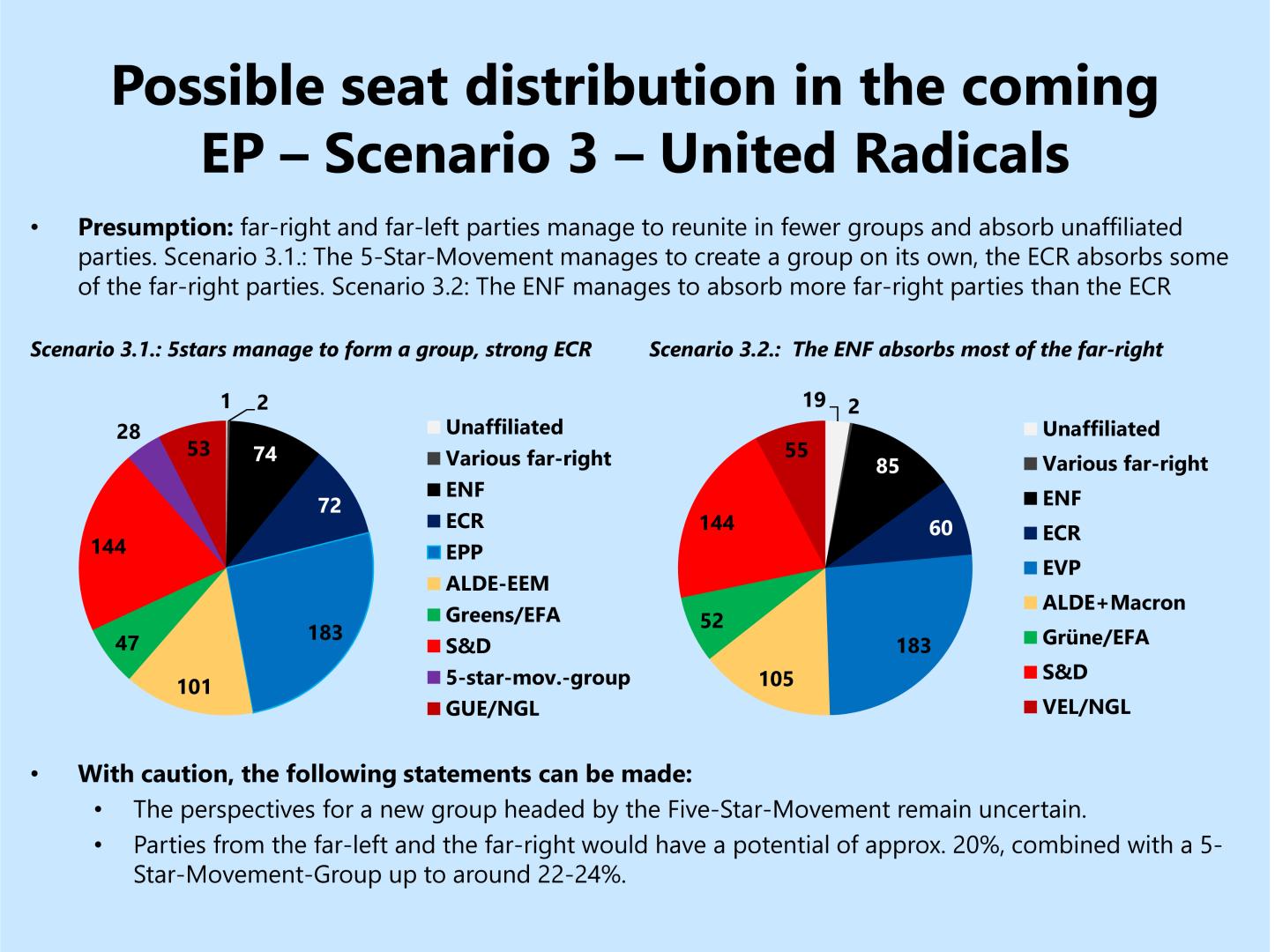
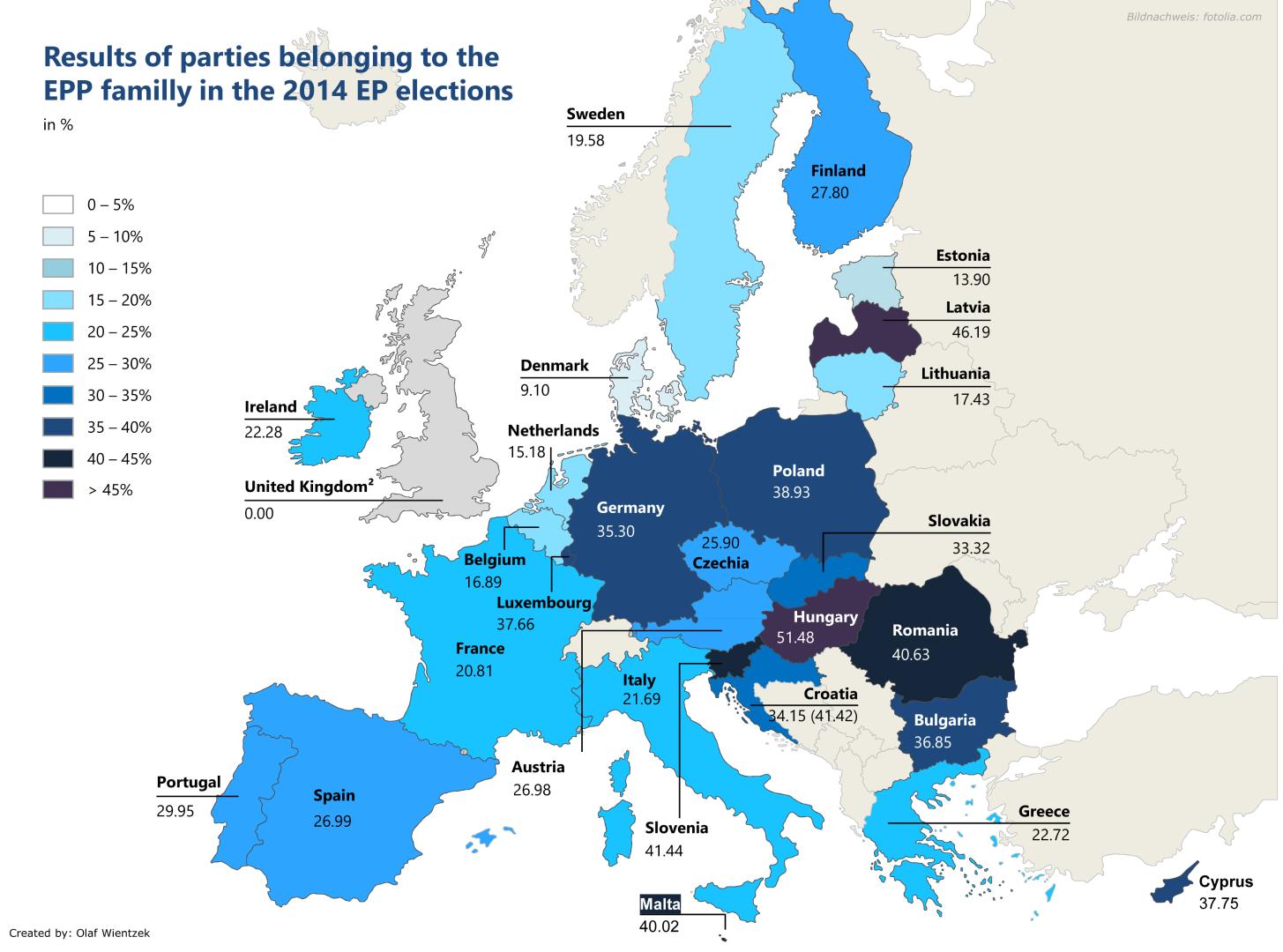

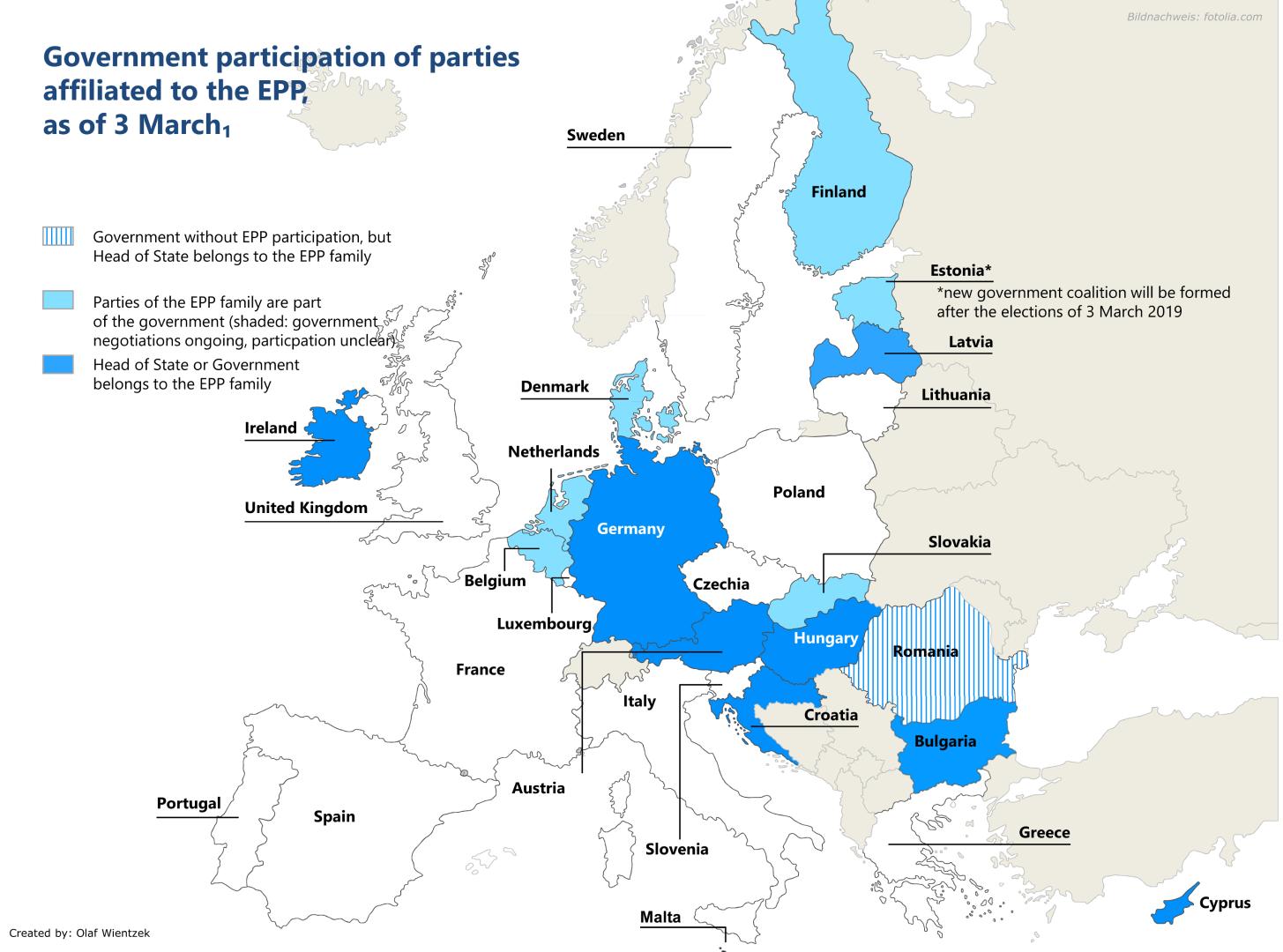
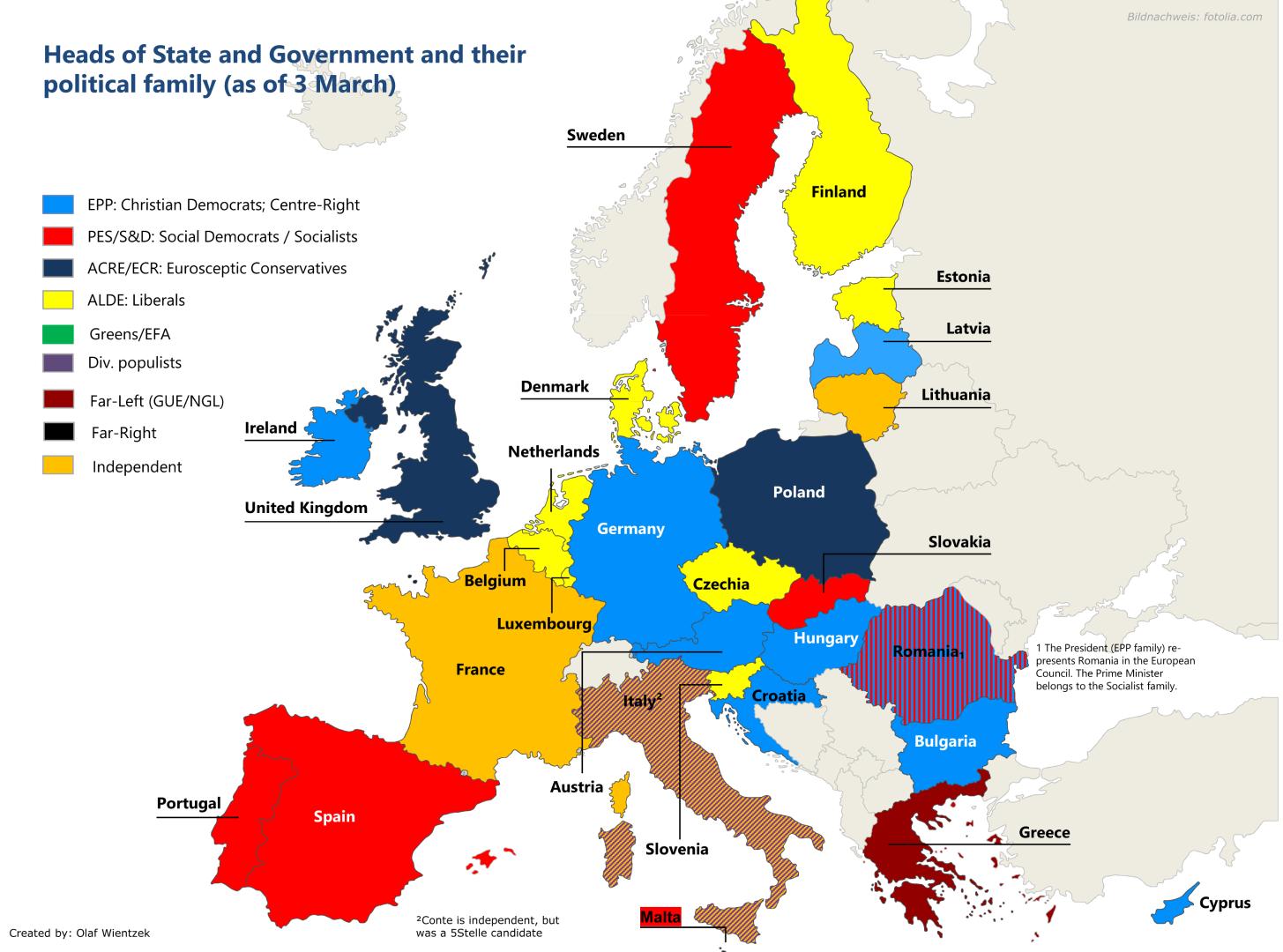
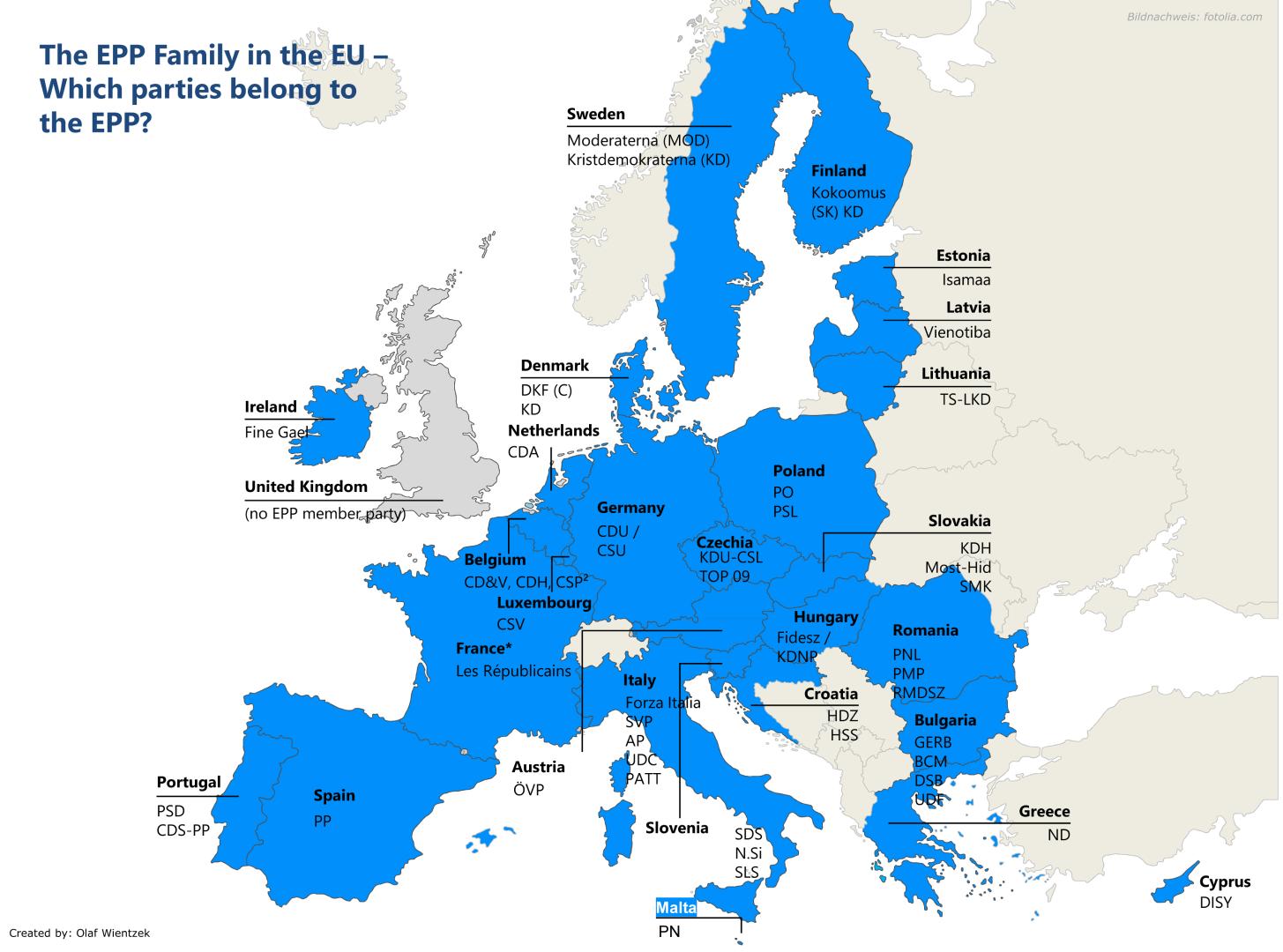


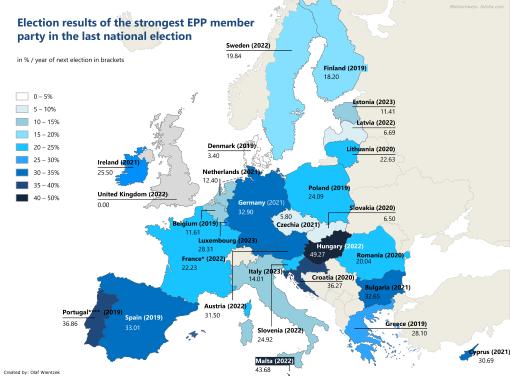


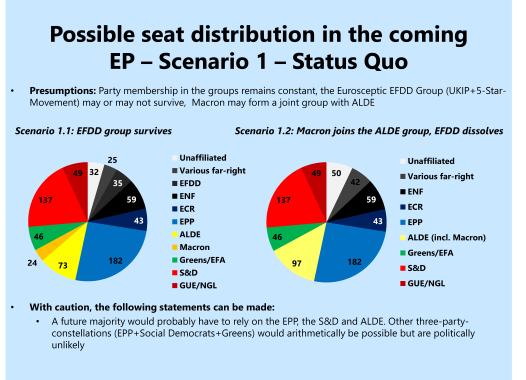



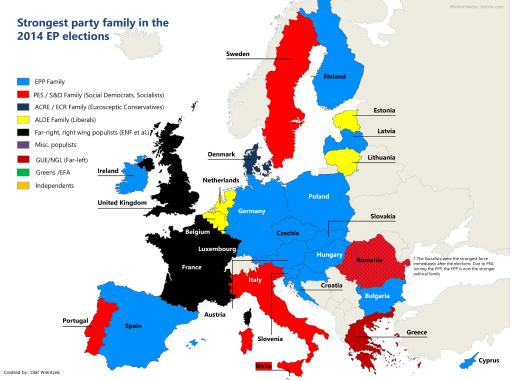




You need to sign in in order to comment.